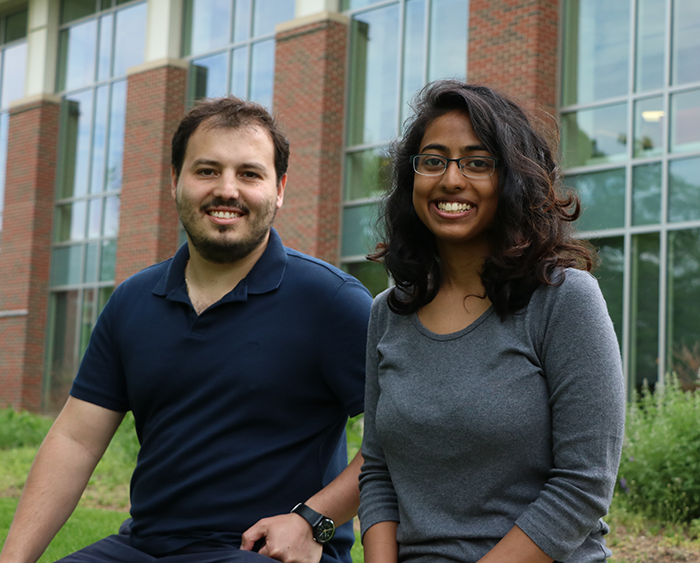Dipika Subramaniam ’21 publishes math research paper with professors
 Professor Enrique Treviño and Dipika Subramaniam '21
Professor Enrique Treviño and Dipika Subramaniam '21
”On Sums of Consecutive Triangular Numbers,” a mathematics research paper co-authored by Dipika Subramaniam ’21 and Associate Professor of Mathematics Enrique Treviño, was published in the journal Integers in April 2020.
Subramaniam, a math major and double minor in data science and physics, and Treviño co-write the paper with Associate Professor Paul Pollack of the Department of Mathematics at the University of Georgia. The paper took two years to complete, from inception to publication, and found its origins with Subramaniam’s Richter Summer Scholars research project in 2018. Treviño and Pollack added to her research before submitting the paper to Integers.
The focus of the paper—triangular numbers—is an area of interest in number theory, a branch of mathematics dedicated to studying properties of integers.
“Dipika and I proved that for any perfect square k, there are k consecutive triangular numbers that add up to a triangular number. The paper also includes a proof that for most integers k, there aren’t k consecutive triangular numbers that add up to a triangular number,” Treviño said.
Subramaniam speaks highly about her experience publishing with “great professors.” She describes Treviño, her mentor and co-author, as being “incredibly patient” and helpful in navigating the unfamiliar aspects of research.
“The research process can take years,” she points out, and includes “a lot of trial and error and experimentation.” The first step, she said, is studying the field and identifying a question that has not yet been answered.
Subramaniam defines one major key to a successful research paper as “finding the intersection between what’s interesting and challenging, but also manageable to solve.”
She describes the research experience at Lake Forest College as “incredibly valuable to undergraduates, because you get a chance to explore different fields of study and get a taste of the research process.”
A rising senior, Subramaniam intends to be a mathematician and, possibly, a professor. With plans to enter a PhD program after graduating from Lake Forest College, Subramaniam credits her research experiences with Treviño as definitively confirming her interest in going to graduate school.
As an interesting side note, Subramaniam now has an Erdős number of 3 as a result of publishing with Treviño, who has an Erdős number of 2. Paul Erdős was a famous Hungarian mathematician who published around 1,500 papers. An Erdős number measures the collaborative distance between an author and Erdős, whose Erdős number is zero.
Subramaniam’s Erdős 3 number means she has published with a mathematician, Treviño, who has published with a mathematician who published with Erdős.
The published paper can be found in this issue of the online journal, Integers.

